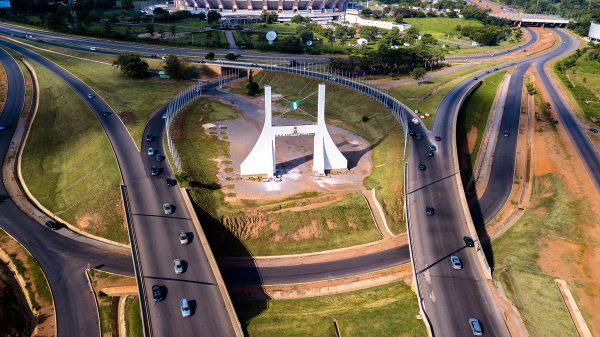
On the 21st of December, 1991, the Federal Government under the leadership of General Badamosi Babangida, finally made the move to name Abuja the capital of Nigeria after years of preparations.

The city and state of Lagos was already overcrowded – it’s infrastructure was also breaking down quickly under the weight of the overpopulation burden. As Lagos went through rapid economic development, the Nigerian regime also felt the need to expand the economy towards the inner part of the country. The Federal Government also felt choked especially regarding concerns on security. It was while in traffic on the streets of Lagos that General Murtala Mohammed was assassinated in February 1976.
Abuja, on the other hand, showed a lot of promise and Babangida was bent on taking Nigeria to the promised land. Abuja was chosen out of 33 other possible sites in the country.
Following this announcement by the government, Abuja thereafter witnessed a huge influx of people migrating for economic benefits or to resume work as civil servants in federal agencies, departments, secretariats, and the like. Strategically located in the centre of Nigeria while being surrounded by huge rocks of scenic reverence, the burgeoning city of Abuja evoked the reputation of ancient fortified cities in Nigeria such as those in Ibadan, Kano, Oyo, Benin and a few others.


Following the template used by Brazil in how it planned its capital, Brasília, the government moved to create a city masterplan. The master plan for Abuja and the Federal Capital Territory (FCT) was developed by International Planning Associates (IPA). IPA is a consortium comprising three American firms: Planning Research Corporation; Wallace, McHarg, Roberts and Todd; and Archisystems. The general structure and major design elements of the city were defined in the master plan. However, the more detailed design of the central areas and business districts of the capital, which comprises it’s monuments particularly was rendered by the Japanese architect Kenzo Tange with his team at Kenzo Tange and Urtec company.

Coincidentally, the decision to move the seat of power to Abuja was initiated by General Murtala Mohammed in 1976 while he was military Head of State. Construction did not altogether start until the late 1970s largely due to economic and political instability. At last, initial stages of the city were delivered by 1991 – same year Babangida decided to move there.
Before the government hatched it’s plan for a new capital, the present city of Abuja was further away towards Suleja in Niger State. The indigenous people of Abuja were also called the Gbagyi (Gwari), and the city also housed subgroups such as Bassa, Gwandara, Gade, Dibo, and Koro. But as more land was needed, the Federal Government had to look towards the surrounding areas.
The government, thereafter, began some negotiation which involved asking the Gbagyi people to hand over a large expanse of their land. The incumbent Emir of Abuja in Niger State at the time, Altai Suleiman Barau, subsequently met with his Emirate Council to approve the contribution of four out of it’s five districts to the new capital, Abuja.
The emirate council was divided initially, as some districts considered the request as outrageous and too much of a sacrifice. In the end, the emirate council approved the request by the Federal Government, trusting that the name of the emirate would eventually become famous throughout the world. The previous town of Abuja was renamed Sule-ja after Emir Suleiman Barau, and “Ja” being the last syllable of the first emir’s name.
The original Abuja in Niger State consequently contributed the lion share comprising 80% of the current land in present-day Abuja/Federal Capital Territory, old Plateau State (now Nassarawa) contributed 16 percent of its southeast territory while old Kwara State (now Kogi) contributed roughly 4 percent of its southwest territory.
Owing to the large heterogeneous ethnic and religious mix of Nigeria, plans had been devised since Nigeria’s independence to have its capital in a place deemed neutral to all major ethnic parties. Thus, in the midst of the political tension caused by the military and the junta, the dream was finally realised in December 1991. The announcement of the new capital city of Nigeria as Abuja was welcomed by the larger majority as a development for the unity of the country, while it was depicted by others as a necessary inconvenience.
Featured Image Source: This Day Live


